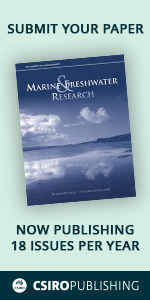MF24250Characteristics of a marine wildlife tourism site: Stingray City, Cayman Islands, before, during and after the COVID-19 global pandemic
 , Colby D. Kresge, Jeremy J. Vaudo
, Colby D. Kresge, Jeremy J. Vaudo  , Guy C. M. Harvey, Jessica C. Harvey and Mahmood S. Shivji
, Guy C. M. Harvey, Jessica C. Harvey and Mahmood S. Shivji
Stingray City, Cayman Islands, is one of the most famous marine life interaction sites in the world, where an aggregation of stingrays are regularly fed by and interact with humans. During the COVID-19 pandemic, feeding of stingrays ceased and tourism operations at the site shut down. During this time, the size and composition of the stingray aggregation changed dramatically and even following resumption of tourism activities, the aggregation remained altered from pre-pandemic conditions. This study has illustrated the large-scale effects that human activities may have on wildlife tourism.







